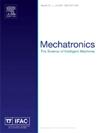Transcending the acceleration-bandwidth trade-off: Over-actuated precision motion stages with selective compliance and servo stiffness
IF 3.1
3区 计算机科学
Q2 AUTOMATION & CONTROL SYSTEMS
引用次数: 0
Abstract
In today’s precision positioning systems, there exists a fundamental trade-off between control bandwidth and achievable acceleration due to the structural material’s stiffness-to-weight ratio limit and existing control techniques. This trade-off severely limits the throughput of photolithography machines and wafer inspection systems for integrated circuit manufacturing, which directly depends on the acceleration and control performance of the wafer and photomask positioning stages. Aiming to break this trade-off and to enable new lightweight stages with further enhanced acceleration without sacrificing control performances, this paper proposes a novel hardware and control co-design paradigm for over-actuated precision positioning stages that integrates servo-stiffness and selected compliance. The key idea is to (a) stiffen the component’s flexible dynamics through servo-stiffness, i.e., actively control the structure’s flexible dynamics using additional actuators and sensors, and (b) smartly introduce structural compliance in the actively controlled flexible modes to reduce weight and to facilitate controller synthesis. A sequential design optimization framework for the proposed methodology is presented, and an over-actuated magnetically levitated planar motion stage embodying the proposed approach, which we call the FleXstage, is designed and built for performance evaluation. Simulation shows that the proposed design provides 24% reduced weight and 2.4 times control bandwidth improvement compared to a baseline lightweight stage, and experimental results of the FleXstage prototype align well with simulation predictions. These results demonstrate the feasibility and potential of the proposed methodology.
超越加速度-带宽权衡:具有选择性顺应性和伺服刚度的过度驱动精密运动阶段
在当今的精密定位系统中,由于结构材料的刚度重量比限制和现有的控制技术,在控制带宽和可实现的加速度之间存在着一个基本的权衡。这种权衡严重限制了集成电路制造的光刻机和晶圆检测系统的吞吐量,这直接取决于晶圆和掩模定位阶段的加速和控制性能。为了打破这种权衡,并在不牺牲控制性能的情况下实现具有进一步增强加速度的新型轻量化平台,本文提出了一种新的硬件和控制协同设计范式,用于过度驱动的精密定位平台,该平台集成了伺服刚度和选择顺应性。其关键思想是(a)通过伺服刚度增强构件的柔性动力学,即使用附加的致动器和传感器主动控制结构的柔性动力学,以及(b)在主动控制的柔性模式中巧妙地引入结构顺应性,以减轻重量并促进控制器的合成。提出了该方法的顺序设计优化框架,并设计和构建了一个体现该方法的超驱动磁悬浮平面运动平台,我们称之为FleXstage,用于性能评估。仿真结果表明,与基线轻量化阶段相比,FleXstage原型的重量减轻了24%,控制带宽提高了2.4倍,实验结果与仿真预测吻合良好。这些结果证明了所提出方法的可行性和潜力。
本文章由计算机程序翻译,如有差异,请以英文原文为准。
求助全文
约1分钟内获得全文
求助全文
来源期刊

Mechatronics
工程技术-工程:电子与电气
CiteScore
5.90
自引率
9.10%
发文量
0
审稿时长
109 days
期刊介绍:
Mechatronics is the synergistic combination of precision mechanical engineering, electronic control and systems thinking in the design of products and manufacturing processes. It relates to the design of systems, devices and products aimed at achieving an optimal balance between basic mechanical structure and its overall control. The purpose of this journal is to provide rapid publication of topical papers featuring practical developments in mechatronics. It will cover a wide range of application areas including consumer product design, instrumentation, manufacturing methods, computer integration and process and device control, and will attract a readership from across the industrial and academic research spectrum. Particular importance will be attached to aspects of innovation in mechatronics design philosophy which illustrate the benefits obtainable by an a priori integration of functionality with embedded microprocessor control. A major item will be the design of machines, devices and systems possessing a degree of computer based intelligence. The journal seeks to publish research progress in this field with an emphasis on the applied rather than the theoretical. It will also serve the dual role of bringing greater recognition to this important area of engineering.
 求助内容:
求助内容: 应助结果提醒方式:
应助结果提醒方式:


